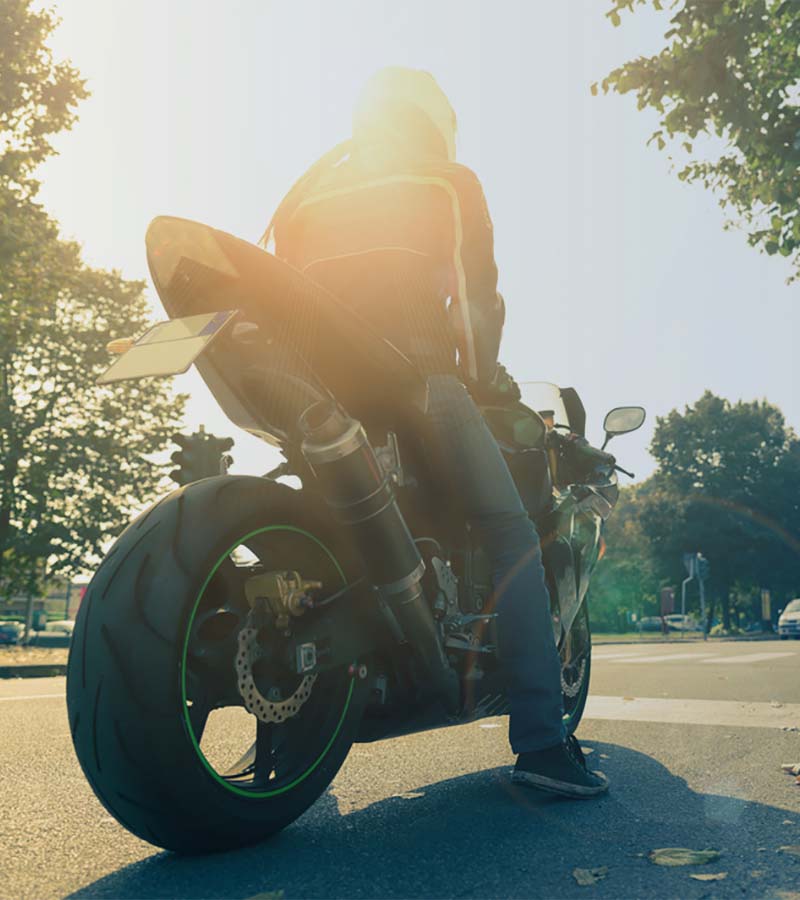Free Case Evaluation
Fill Out The Form Below To Find Out If You Have A Case.
Thank you for contacting us. One of our colleagues will get back to you shortly.
New York Motorcycle Accident Lawyer
For many people, the thrill of zipping down the open road on a motorcycle is one of life’s great pleasures. A motorcycle can provide a window on the world that few other modes of transport can equal. Yet it’s important to understand that motorcyclists are particularly vulnerable to collisions. Without being enclosed in 2,000 pounds of plastic and steel, it’s far easier to experience devastating injuries when accidents occur.
The numbers illustrate the risk: According to the National Highway Traffic Safety Administration (NHTSA), roughly 4,500 people die annually in the U.S. as a result of motorcycle accidents. An additional 90,000 are seriously injured. Perhaps most concerning, the current number of fatalities is double the rate during the 1990s. Data from the NHTSA also shows that injuries are far more likely to occur with this mode of transportation: 80-percent of all motorcycle accidents result in an injury, while only 20-percent of auto accidents do the same. Motorcycle injuries are also a leading cause of paralysis.
Because of these risks, it’s imperative to know how to properly handle a motorcycle accident — and how to protect yourself legally and financially.
How to respond in case of a motorcycle accident
In the immediate aftermath of a motorcycle collision, it’s critically important to remove yourself from the roadway, as secondary accidents are a serious concern. You’ll also need to check for injuries, and seek medical treatment if necessary, either on scene or at a nearby medical center.
Because motorcycle accidents can be particularly injurious to the body, it’s essential to keep riders under close observation. Make sure they are breathing without difficulty and check their pulse. Do not remove the helmet unless an airway is blocked, as this protects the spine. Additionally, because the majority of motorcycle collisions involve the rider going over the top of the motorcycle, you should pay particular attention to leg, neck and back injuries. The thigh bone is especially susceptible to injuries in motorcycle crashes, and is located near multiple major arteries.
Once medical concerns have been addressed, you should document the accident with photos and videos, exchange information with witnesses and other involved parties and ask for contact information from the authorities handling the crash.
Motorcycle Riding in New York City May Be Riskier Than You Think
In many ways, New York City is prime territory for motorcyclists. With its combination of breathtaking urban landscapes and gorgeous green spaces, few large cities can rival New York in terms of cycling scenery.
Yet New York City — with its high traffic density — can also be a very dangerous place for riders. Studies have shown that riding within the five boroughs places motorcyclists at disproportionate risk of injury and death.
To explain why, let’s take a closer look at motorcycle safety in New York City — then review some smart tips for staying safe on city streets.
NYC Motorcycle Accidents: By the Numbers
Statistics show there were 4,673 motorcycle crashes in New York state in 2017, with 143 of those crashes involving a fatality. A large percentage of these crashes occurred within New York City’s borders.
In an effort to lower these numbers, the Department of Transportation commissioned the “New York City Motorcycle Safety Study” in 2015. This study was a comprehensive attempt to discover the “who, what, where, when and why” of citywide motorcycle crashes.
The following are a few of the study’s more interesting findings:
- Motorcycles only account for two-percent of all vehicles on city streets, yet they are responsible for 14-percent of fatal crashes.
- Motorcycle riders in New York City are twice as likely to be involved in a fatal crash as those in New York State. The city’s fatality rate (89 out of 100,000 registered vehicles) is also much higher than the national rate (56 out of 100,000).
- Crashes are more prevalent in the evening, afternoon and during weekends.
- Crashes spike dramatically in the summer.
- Most fatal accidents occur on city streets, not highways.
- Visibility (for motorcyclists and cars alike) is a common factor in serious crashes.
Tips for Safer Riding
The numbers tell the tale: Motorcycle riding in New York City is riskier than in most other areas. There are, however, some steps you can take to reduce these risks and arrive at your destination safely.
First, it’s important to have the appropriate helmet and safety gear. This is absolutely essential, as a shirt and jeans offers little in the way of protection. A leather jacket, gloves, footwear, eyewear — all of it helps keep you safer. A helmet is estimated to be 37-percent effective in preventing fatal injuries, and the state of New York mandates that you wear one.
Next, it’s important to find a motorcycle that fits, both physically and with your skill level. Today’s high-performance motorcycles may offer too much speed and power for newer riders, so find one that you can handle safely.
Once your wheels are on the road, drive defensively and exercise good situational awareness. Don’t ride in poor weather, and always look for road hazards.

Verdicts & Settlements
- $8 Million for Pedestrian Knockdown Case
- $3 Million for Lead Poisoning Case
- $3 Million for Pedestrian Knockdown Case
- 2.6 Million for Lead Poisoning Case
- 2.2 Million for Lead Poisoning Case
- 2 Million for Lead Poisoning Case
- 1.875 Million for Defective Product Case
- 1.5 Million for Lead Poisoning Case
CLIENT TESTIMONIAL
Frankel Law Firm was extremely professional. They were very helpful with every step of the process, always reachable to answer questions and give excellent advice. They were a pleasure to work with!